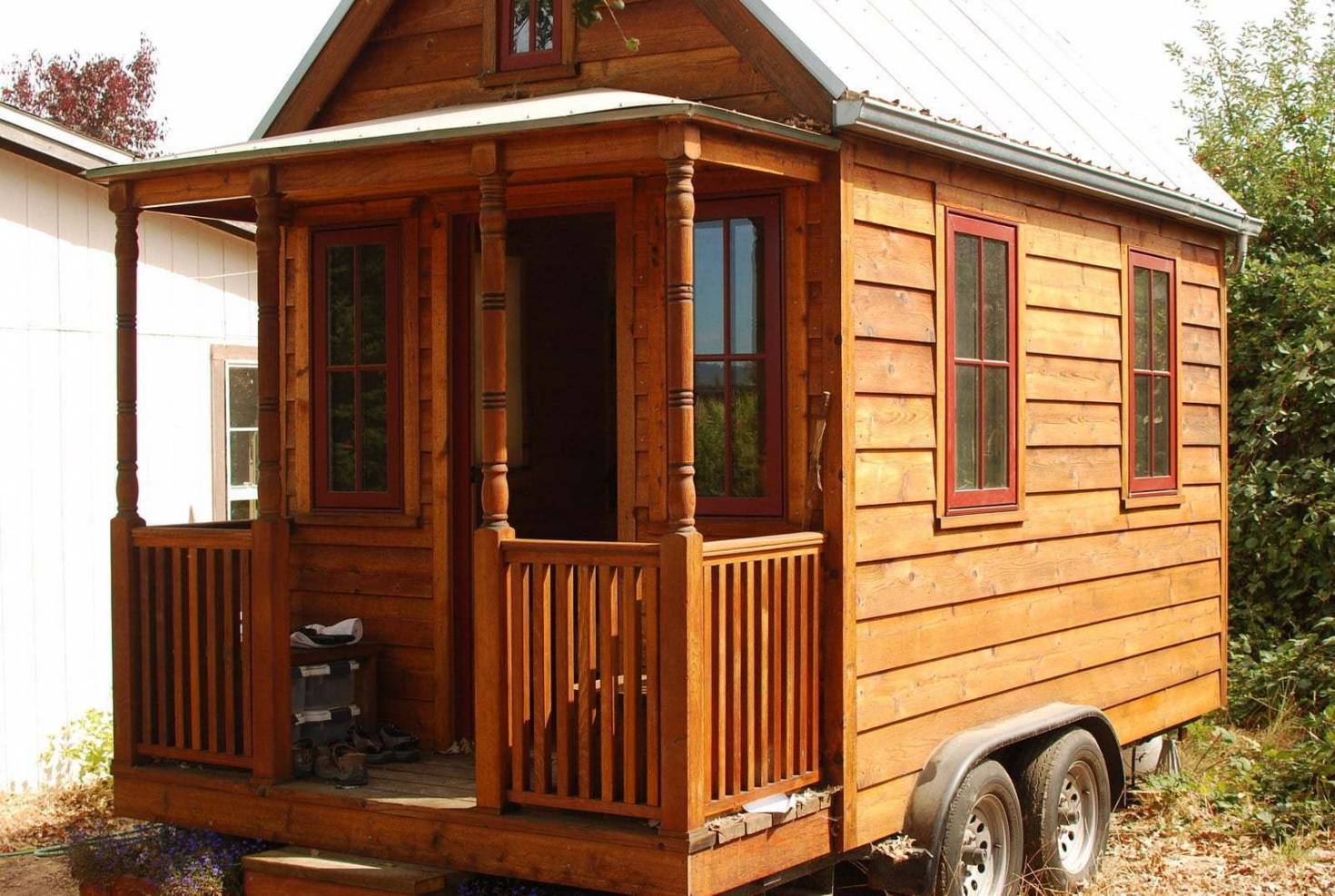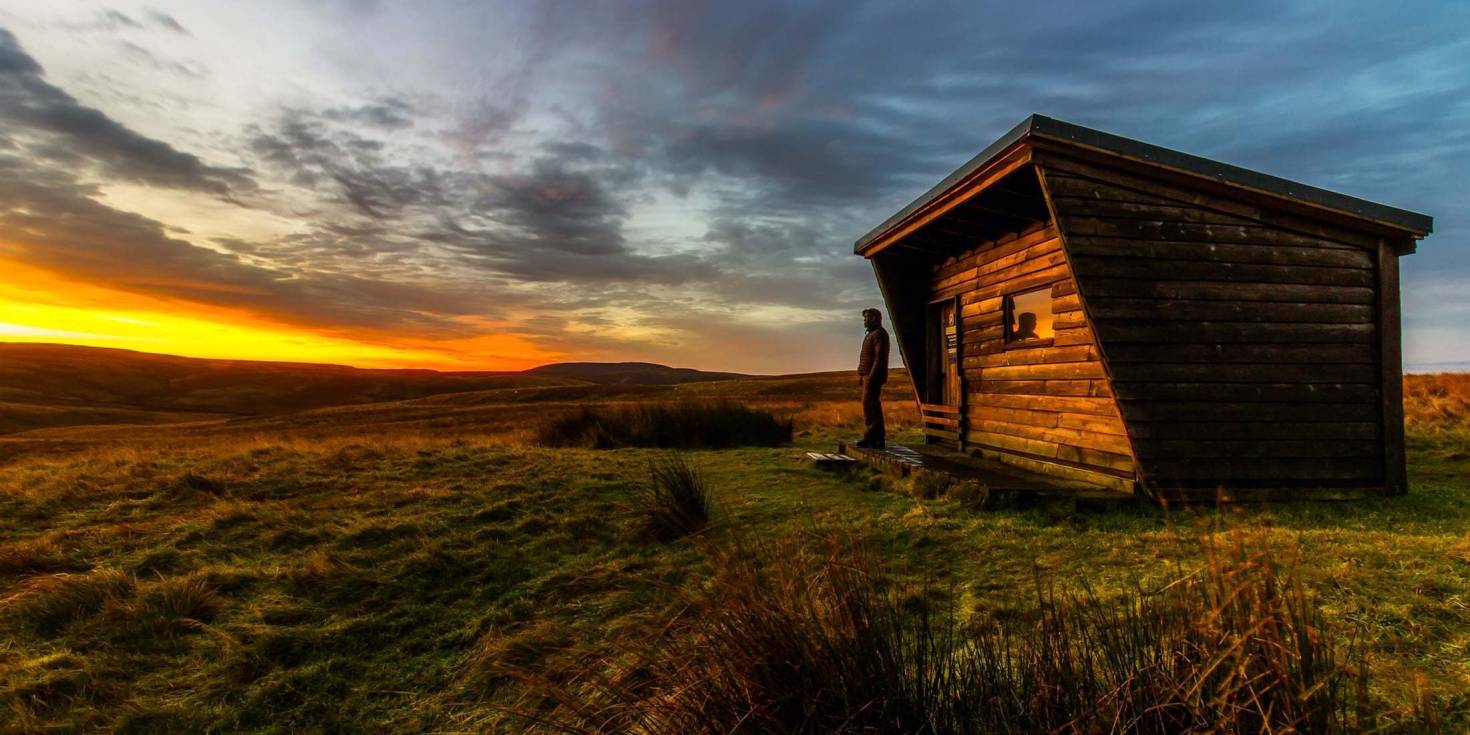Bigger is better… right?
When it comes to the house you live in this has been the traditional opinion for a long time, but there’s a lively movement rising up in the United States that says this is not necessarily the case. It’s referred to as the tiny house movement.
The tiny house movement goes against the grain of conventional thought and says bigger is not actually better. These people are buying tiny homes with land for several different reasons, but the one that stands out is simple… freedom. Just because everyone has been doing a particular thing for a long period of time doesn’t mean it’s a good idea.
Simplicity is the ultimate sophistication.Leonardo da Vinci
Tiny homes come in all shapes, sizes, designs, and even nicknames. They are also known as compact houses, mini houses, micro houses, and little houses. The average size of a single-family home built in 2018 was 2,386 square feet according to the United States Census Bureau. A small house is considered to range from 400 square feet to 1,000 square feet, and a tiny house is 400 square feet or less. Curbed reports that one of the nation’s larger tiny home builders, Wisconsin-based Escape, has seen business grow by approximately 200% in the last couple years and by 6000% since the business started.
There are popular tv shows dedicated to tiny houses like “Tiny House Nation”, “Tiny House Hunters”, Tiny House Big Living”, and “Tiny House Builders.” There have been movies made such as “Tiny: A Story About Living Small”. There’s even an American Tiny House Association that's been formed. Whether you’re actually thinking about joining the movement or not, the nation is captivated by this increasingly large “tiny revolution.” Just like with any new idea that's gaining traction, there are some legitimate pros and cons to examine. Before you go out and sell your home and belongings, here are a few things to consider.

Advantages of joining the tiny house way of life
Flexibility
Perhaps the most prominent reason why people are exchanging their large house for a tiny one is it provides instantaneous flexibility. Since most tiny houses are built on wheels you can pick up and move anytime wherever your heart desires. You don’t have to be committed to one location for an extended period of time if that’s not your style.
Save money
There are opportunities to save money in every direction you look. If you build you can save money by using significantly fewer materials and labor. The utility bill should be lower since it’s only powering a relatively small area. You’ll be required to buy less furniture to fill your house because space is so limited, and you won’t have to pay as much in property taxes.
According to Zillow, in December of 2015, the median U.S. home value was $183,500. The average cost of a tiny home was roughly $23,000. The Tiny Life infographic features some cool statistics and reported that 68% of tiny house people don’t have a mortgage compared to 29.3% of all U.S. homeowners.
You can also save by purchasing cheap land for sale to place your tiny home. To learn more, take a look at the cheapest states to buy land.
Save time
“I’m so busy I just don’t have the time” is one of the most frequently used excuses you hear for not getting things done. Well, a tiny house could be your solution. According to the United States Department of Labor, on average, women spend 2.7 hours on household activities per day, while men spend 2.2 hours. It won’t take you near as long to clean your 1-2 room house as it did when you were responsible for tidying 5+ rooms.
Environmentally friendly
Another compelling argument the tiny house movement has going for it is it’s beneficial to the environment. First, it takes up less of the world’s materials in order to build, furnish, and maintain it. Second, as mentioned above, you consume less energy heating and cooling the house. Hot-water heaters and refrigerators are normally smaller in a tiny house, along with the fact there’s simply less interior area to sustain the desired temperature in. According to CustomMade, cutting a home’s size in half reduces emissions by 36%.
A simpler life
Some might argue a simple life translates into less stress and more enjoyment. This idea is one of the keystones of the tiny house revolution. You're not tied to a large mortgage payment that takes up a large portion of your paychecks. You shed the weight of a bunch of unneeded possessions and are provided with the opportunity to have more intimate relationships. You also don’t have to spend entire weekends cleaning (or dreading cleaning) your messy home.
Porch conducted a study of the tiny home market in 2021 which is extremely useful and informative. Their research includes everything from average tiny home sizes and prices, tiny home market state comparisons, and affordability statistics to states where tiny homes are cheapest, most expensive, and most common as well as easy-to-digest charts and tables. Here are a few of their key findings.
- The average tiny home size was 225 square feet, 8 times smaller than a typical house.
- The average tiny house cost was 87% cheaper than a traditional home.
- Per square foot, tiny homes are 62% more expensive than typical houses.
- Tiny homes are cheapest in North Dakota and most expensive in Hawaii.
- As of August 2021, there were over 1.4 million homes considered "tiny."
Tiny homes are a popular choice for off-the-grid living. Professional tiny-built homes often range from $40K to $200K. If you're looking for land, check out our off-grid land for sale or take a look at our article with details on living off the grid to learn more about that lifestyle.
In many cases, an off-the-grid cabin can check all the boxes above and fit the bill for living a simpler, healthier life. If you've found the land and are looking to build a cabin or home, Den is a great resource for tiny home plans and DIY cabin kits. They’ve already done a lot of the work for you and have some fantastic options specifically designed to embrace nature with minimal impact. Check out this cool video highlighting one of their A-frame cabin designs.
Disadvantages of joining the tiny house way of life
Extreme organizational skills
Even though you’ve got rid of a large number of your belongings, you'd better be exceptionally organized because tiny homes are so tiny. You need to be proficient at utilizing space. This could possibly add stress instead of reducing it.
Bare necessities
You’ll be forced to strip down to the bare essentials. Moving into a tiny house is a lifestyle change and you are forced to live without certain amenities you’re used to. What is a must-have and what can you live without?
The limits of limited space
This may seem obvious but it’s important. Limited space can be tough when it comes to living arrangements. There’s no “getting away” in the den or the man cave. It may be harder to entertain family and guests. You might wake up your significant other if you turn the tv too loud. It could cause you to drift farther away in your relationship, or on the contrary, you may become closer.
If you're comfortable with limited space but want the freedom to move around, explore RV lots for sale where you can pick your spot based on season or enjoy the travel between locations.
Architect Magazine conducted a study on the states that make it the easiest to go tiny. They studied resources, ordinances, and builders in all 50 states. They awarded points based on tiny home communities, RV parks accepting tiny homes, permitting/zoning opportunities, tiny house builders, tiny house architects, and towns specifically welcoming them. Take a look at what they found.
- California - 32
- Oregon - 24
- Texas - 18
- North Carolina - 17
- Florida - 16
Some people like the idea of being part of a community as opposed to living off the grid. Before you start packing, there are some factors to take into consideration. Take a look at this article discussing moving into a tiny home where they call out things to consider before relocating to a tiny home community.
If you're ready to move quickly, explore the thousands of tiny homes for sale and cabins for sale we have listed across the country.
Victoria Moran said, “A simple life is not seeing how little we can get by with-that’s poverty-but how efficiently we can put things first… When you're clear about your purpose and your priorities, you can painlessly discard whatever does not support these, whether it’s clutter in your cabinets or commitments on your calendar.” So all that's left is to ask... are you going to join the tiny house revolution?

